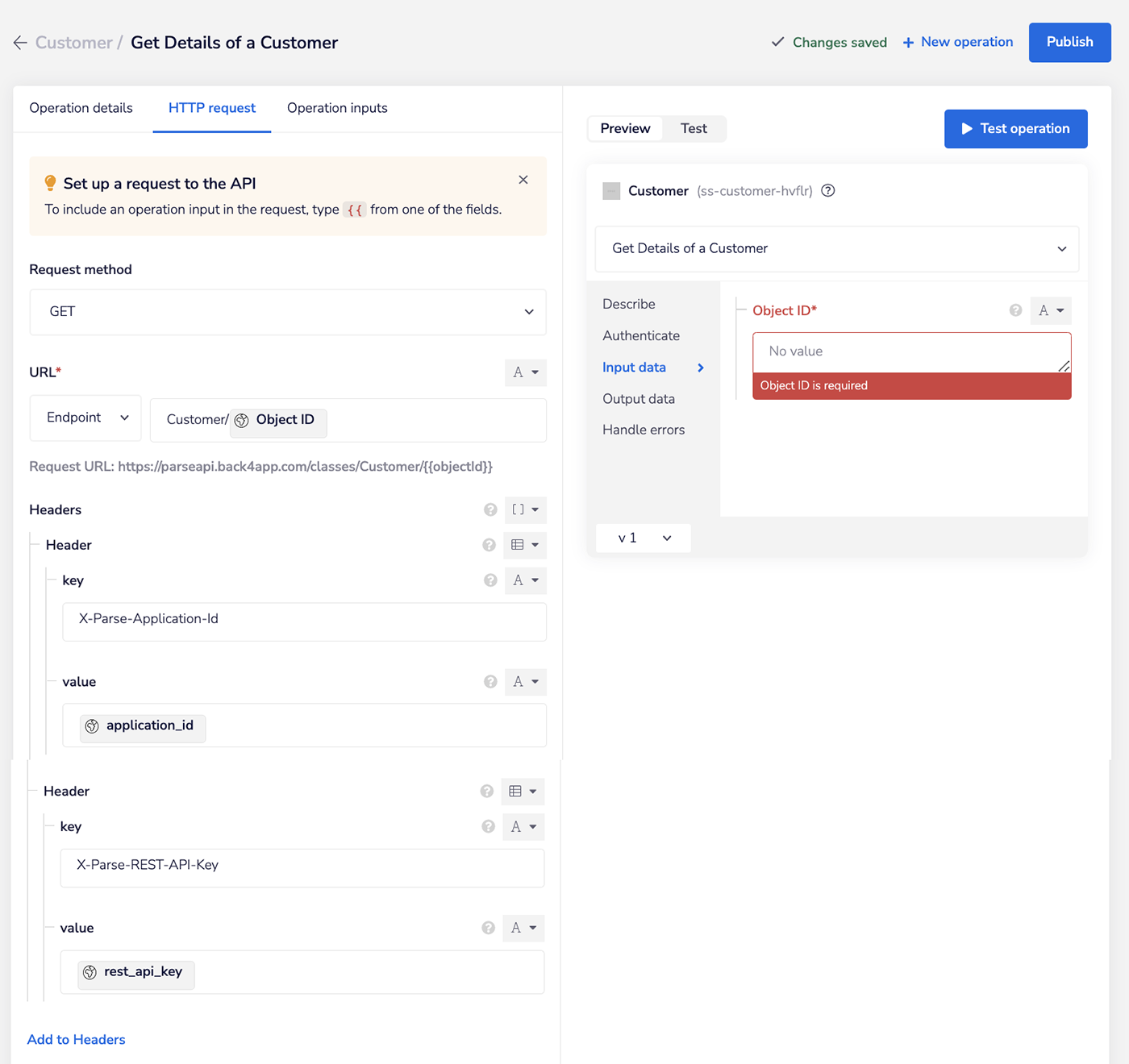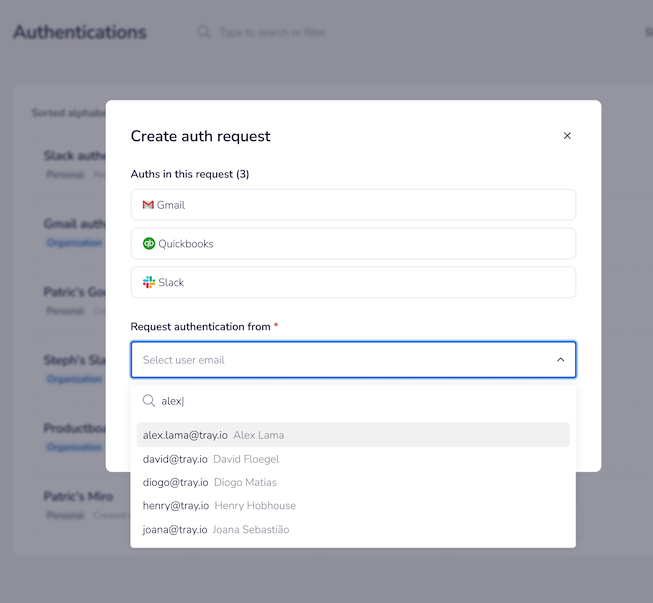Tray.io Low-Code Integration, Automation Updates Drive Enterprise Hyperautomation
Tray.io has updated its low-code integration and automation portfolio. IDN talks with Tray.io CEO Rich Wandron about how latest edition will enable IT and business users to drive hyperautomation.
by Vance McCarthy
Tags: APIs, connectors, hyperautomation, integration, low code, Tray.io,

CEO

"With Tray.io’s new Connector Builder, technologists and non-developers can define a connector, add operations, and test without requiring code."
 Integration Powers Digital Transformation for APIs, Apps, Data & Cloud
Integration Powers Digital Transformation for APIs, Apps, Data & CloudAugust 25, 2022
Tray.io is adding a new wave of ease-of-use, low-code features to accelerate and automate enterprise integration tasks – and power the next way of enterprise hyperautomation.
IDN talks with Tray.io CEO Rich Waldron about how Tray.io's updates enable IT and business users to fuel hyperautomation.
"High-velocity automation with airbags is the best way to describe what Tray.io is bringing to customers in our latest product release," said Rich Waldron, Tray.io's CEO and co-founder.
“Companies crack the code on hyperautomation when they can sustainably scale it, teams can build new connectors on-demand using low-code, and developer productivity increases."
Tray.io's updates include and innovations will:
A new Connectivity API simplifies the ability for developers to integrate thousands of underlying endpoints – by using just three API calls.
A new Connector Builder low-code environment that allows both skilled developers and non-technical business users to develop reusable connectors visually using a simple drag-and-drop interface and easy to set configurations.
Expanded Connector Library with more than 90 new connectors and thousands of newly supported endpoints. This brings Tray.io's connector library to more than 600.
Frameworks and infrastructure features to empower teams to build complex integrations with more speed and required governance.
With these and other new capabilities, Tray.io is increasing the ability for company's execute hyperautomation initiatives that drive efficiency at scale by automating any processes across your organization.
Gartner defines "hyperautomation" as: A business-driven, disciplined approach that organizations use to rapidly identify, vet and automate as many business and IT processes as possible." Hyperautomation involves the orchestrated use of multiple technologies, tools or platforms, among them Gartner lists, AI/ML, iPaaS (integration as a service), low-code, RPA and more.
A Tour of Tray’io’s Latest Hyperautomation Upgrades
Waldron takes IDN on a guided tour of Tray.io’s upgrades to fuel hyperautomation.
Connector Builder provides teams a "completely guided, clicks-not-code experience" for creating, testing, and publishing custom connectors, Waldron told IDN.
The tool actually guides users through the entire process of building a new connector to any REST APIs from start to finish. In addition, built-in versioning capabilities let IT and ops teams safely manage, update, and maintain connectors and workflows running through them.
Waldron shared more details with IDN on Connector Builder:
Connector Builder is significantly different from monolithic legacy products. We took the approach to extend low-code development to the process rather than force customers to rely on SDKs and developers.
[It] eliminates the requirement to the use SDKs or significant engineering resources to code by hand and will give anyone across a business—citizen developers, technologists and IT teams—limitless, high-velocity connectivity to quickly, easily, and visually develop reusable connectors.
With Connector Builder, technologists and non-developers can define a connector, add operations, and test without requiring code—so connectors can be developed in hours and easily updated. Traditional approaches to connector development require using SDKs and writing code, such as in Java or Ruby on Rails, which requires hard-to-find developers and is often costly as it can take months to build (not to mention painful maintenance for the life of the integration).
Ultimately, teams use Connector Builder to quickly overcome connectivity roadblocks, maintain delivery velocity, and maximize reuse.
Tray.io presents at Enterprise Integration Summit
Learn about the latest in Hyperautomation
Register Here - August 25 - Online
The Connectivity API for Tray Embedded provides customers a powerful 3-call way to programmatically access Tray.io's library of hundreds of pre-built service connectors for CRM, ERP, HCM, and other popular business applications.
Waldron explained the capabilities of Connectivity API for Tray Embedded and how it works:
The new Connectivity API for Tray Embedded simplifies the integration of thousands of underlying endpoints into just three API calls while still providing developers with complete and granular control. With this capability, developers can access Tray.io's entire connector library through a single API gateway, enabling product teams to supercharge the delivery of custom in-product integrations to their customers.
Waldron added that with Tray.io's Connectivity API, product teams at SaaS companies responsible for delivering in-product integrations to their customers' stacks can supercharge developer productivity and deliver robust, productized customer integrations faster.
He added that Tray.io Connectivity API works using a single model that provides access to hundreds of connectors, along with the authentication collection and core security framework.

The model enables the Connectivity API simple '3-call' process for users.
#1. Get Connectors
Returns a list of all of the available connectors and versions
#2. Get Connector Operations
Users request a specific connector and version to get the available operations for that connector. This also provides a common schema for each operation to embed hundreds of pre-built connectors into your application
#3. Call Connector
Takes the inputs specified by the connector operations response and makes the call to the connector through the underlying Tray.io technology foundation
Tray.io's Connectivity API comes as the number of integration endpoints and APIs is exploding by at least 10 percent annually, Waldron noted. "The constant expansion of the API economy means low-code developers and business technologists cannot rely on packaged connectors alone or on scarce internal development resources to build and maintain integrations and automations," he said.

Developers can access Tray.io's 600+ connector library through a single API gateway, simplifying and speeding connectivity across apps, databases, and tools—from ERP and CRM to HCM.
Other Tray.io Platform Enhancements To Promote Hyperautomation
Also notable among Tray.io's updates is the addition of Authentication Collector.
With Authentication Collector and Projects, we're continuing to invest in a collaborative and decentralized development platform, versus older style tools that are geared only to centralized integration specialists.
For example, Authentication Collector makes it simple for teams to securely, quickly, and remotely collect and manage authentications from the managers of apps, databases, and tools that are participating in an automation workflow—even if they are not Tray.io users. Self-organizing teams use Projects to collaborate on sophisticated, large-scale, multi-workflow automations such as Lead Management, RevOps, or Quote to Cash.
Additionally, with the Tray Embedded Integration Manager, services teams and global system integrators can build custom automations collaboratively with their customers. In addition, they can safely collect authentications from users through secure links instead of risk-laden email, voice or post-it notes methods.
Tray.io product portfolio will now give customers Sandbox Workspaces and test users so enterprise automation teams can develop workflows, test them in secure workspaces partitioned from production, and quickly move them to production when ready.
Tray.io Says Hyperautomation Requires Modern Integration, Governance
One of the barriers to achieving all the efficiencies of hyperautomation, Waldron noted, is the pervasive persistence of point-to-point integration.
Point-to-point integrations may work as one-offs, but are ultimately a dead end. Automating business processes like Lead Management, Order to Cash, or RevOps demands a substantial and growing amount of business logic—much more than simple point-to-point API integrations can practically provide.
For example, a Lead Management process may require orchestrating dozens of apps across sales and marketing. Finally, point-to-point, siloed integrations can quickly become an operational nightmare as they grow—there is little reuse; they are
hard to maintain; and have little centralized observability, logging, or analytics.
Point-to-point integration products often lack the global governance, collaboration, and controls enterprises need to meet IT demands. Meanwhile, monolithic legacy products require complex, developer-only SDKs that crush automation velocity when teams hit inevitable connectivity roadblocks.
Tray.io provides the needed connectivity and enables the sophisticated business logic for entire business processes to be developed using low-code constructs. Often this is done with numerous apps as participants in the process—far more sophisticated than a singular, point-to-point integration, while still being fully visual.
Hyperautomation's other important ingredient is easier governance, Waldron said.
Governance is crucial to automate at scale and therefore it is part of our hyperautomation strategy. Low-code solutions provide the velocity, but governance ensures that they can grow sustainably and is a significant reason why companies choose Tray.io.
For example, teams can create Workspaces (groups with role-based access control), and now Projects to partition and manage assets and roles. Tray.io provides version control and workflow history/rollback and detailed logs that provide an audit trail. For IT observability, we provide log streaming to apps like Datadog as well as built in Tray Analytics to monitor workflows.
We also ensure reusability, with capabilities like Snippets and Callable Workflows, that ensure teams reuse rather than recreate business logic. Finally, we provide capabilities that automate workflow operational integrity like visual error-handling.
Tray.io's updates also include updates for better teamwork, authentication management and automation features to promote "low-code at scale," Waldron told IDN.
Related:
- The Critical Integration Miss: Continuous Exploration
- Survey: 92% of Enterprises Working on, Planning App Modernization
- Matillion Adds No-Code, Automation To Speed Delivery of CDC and Batch Data Pipelines
- Tray.io 'Embedded iPaaS' Empowers SaaS, ISVs via Low-Code, Automated Integrations
- API Management vs. Service Mesh: The Choice Doesn’t Have to Be Yours
All rights reserved © 2024 Enterprise Integration News, Inc.


